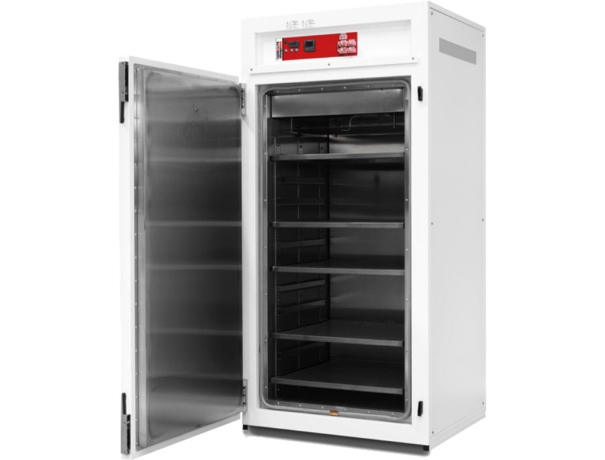Laboratory ovens are one of the most versatile equipment in a laboratory. They can be used for various tasks, from simple heating to complex reactions. It is mainly used in the food, pharmaceuticals, chemicals, and electronics industries. Laboratory ovens are employed in various processes in biotech, pharmaceuticals, and materials production industries, including baking, curing, annealing, and drying multiple chemical and physical compositions. Most of these processes produce exceptional results and necessitate different types of lab ovens. Let's see the kinds of laboratory ovens first.
Types Of Laboratory Ovens
There are different types of laboratory ovens, each having its specific uses. The three most common types of lab ovens are:
1) Mechanica or Gravity Convection Ovens - These ovens use natural convection to circulate air throughout the chamber. The forced circulation of hot air results in uniform heating of the contents inside the room.
2) Vacuum Ovens - These ovens operate under a vacuum and are used for drying or dehydrating samples.
3) High temperature - These ovens are used for processes that require high temperatures, such as sintering.
4)Forced air circulation ovens have a blower airflow distribute the heat evenly around the oven and offer excellent temperature uniformity and fast temperature recovery.
4) Clean Room- Designed for the semiconductor industry, pharmaceuticals and medicine,for heating processes that require work with a high-level oven.
How Do Laboratory Ovens Work?
Laboratory ovens work by circulating hot air around the chamber to evenly heat the contents inside. The type of heating element and the airflow pattern used will depend on the specific model of the oven. The working of a typical laboratory oven can be divided into four main functions:
1) Heating the element - This is the part of the oven that produces heat. Gravity convection ovens heat the substance without the need for dehumidification. This process is mainly used in Pharmaceutical, manufacturing, and material science labs.
2) Curing - Curing is using heat to change a substance's physical or chemical properties. It hardens, strengthens, or changes the color of the substance. Curing is mainly used in rubber, plastic, nanotechnology, glue, and paint.
3) Drying - Drying is removing moisture from a substance. Dehumidification is necessary to dry the substance altogether. This process is primarily used in environmental, biological, and pharmaceutical laboratories. The forced-air or vacuum oven is the best type of oven for biological samples that have a high water content or low heat tolerance.
4) Annealing heats - Annealing is heating a material to change its properties without melting it. After that, the element needs to be cooled slowly to relieve stress and improve flexibility. This process is primarily used in the metal working, medical device manufacturing, electronics, and glass industry.

Types OF Uses Of Lab Oven
The most typical applications of laboratory ovens are heating and drying glassware for autoclaving lab supplies for sterilization. Many manufactured items, such as automobile parts and sporting goods, are tested in laboratory ovens to determine their tensile strength, flexibility, and resiliency.
A lab oven is a versatile tool that can be used for a variety of purposes, including advanced simulations to measure extended product use. You can use this type of test to determine the lifespan of a product. Ovens can also be used for curing to activate a chemical reaction and change the chemical composition of sophisticated polymers. This process is often used in the manufacturing of electronics. Lab ovens can also be used for solder strength testing in circuit boards and burn-in tests for encountering early deficiencies in manufactured circuits. These tests are essential for ensuring the quality of electronics products. These are primarily standard uses for lab ovens.
Specialized lab ovens are necessary for biological, forensic, and environmental laboratories.
Biological laboratories also make use of lab ovens for a variety of purposes. Gravity convection ovens are often employed to remove microbiological contaminants in labware and surfaces. In addition, vacuum ovens are often used for adhering substrates to filters and other media. These uses are essential for ensuring a sterile and safe environment in which to work.

Environmental laboratories also utilize laboratory ovens regularly in their drying processes. They can determine the sample's moisture content by weighing the samples before and after drying. This information is helpful for various purposes, such as understanding the effects of drying on certain types of materials. These types of processes can be done with gravity convection ovens. Another option could be forced-air ovens.